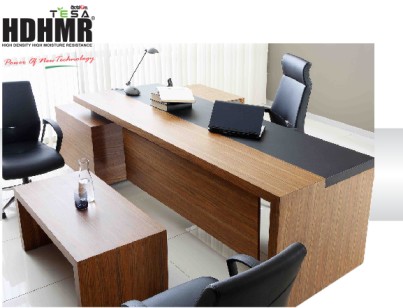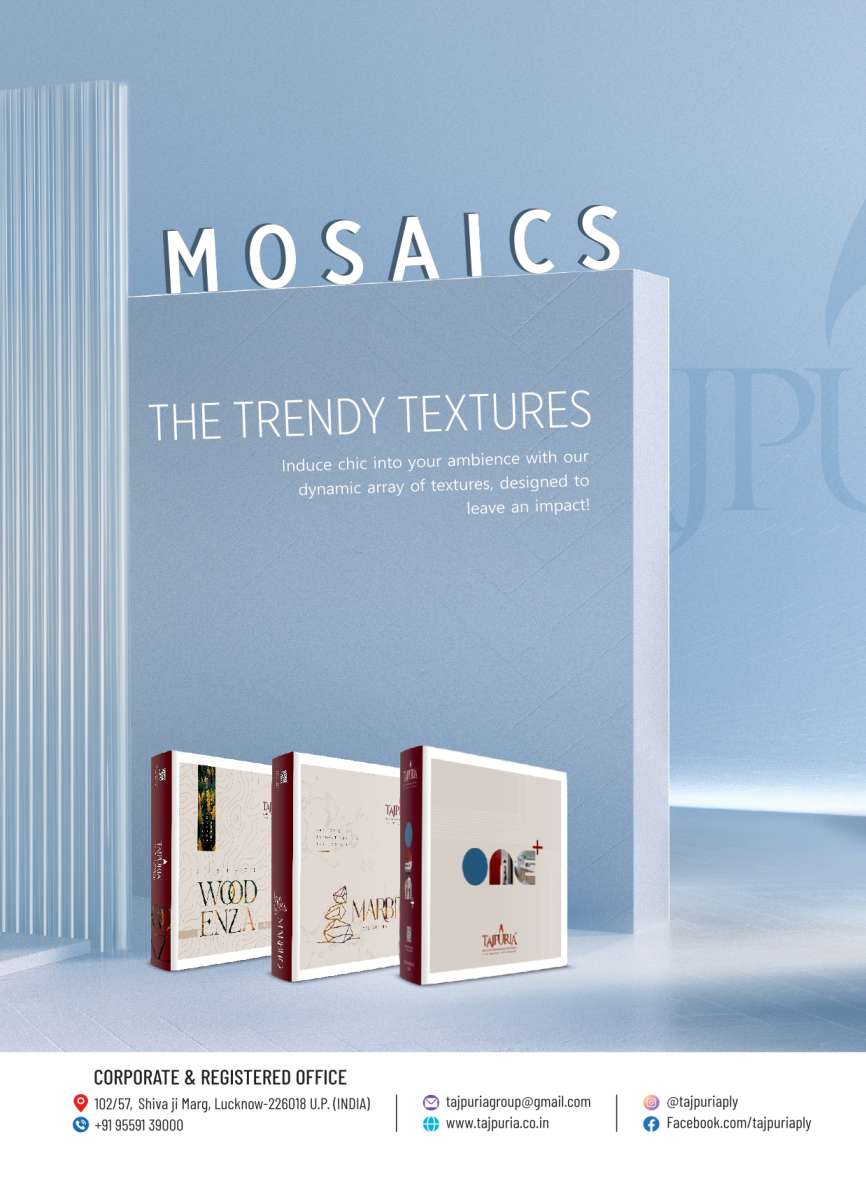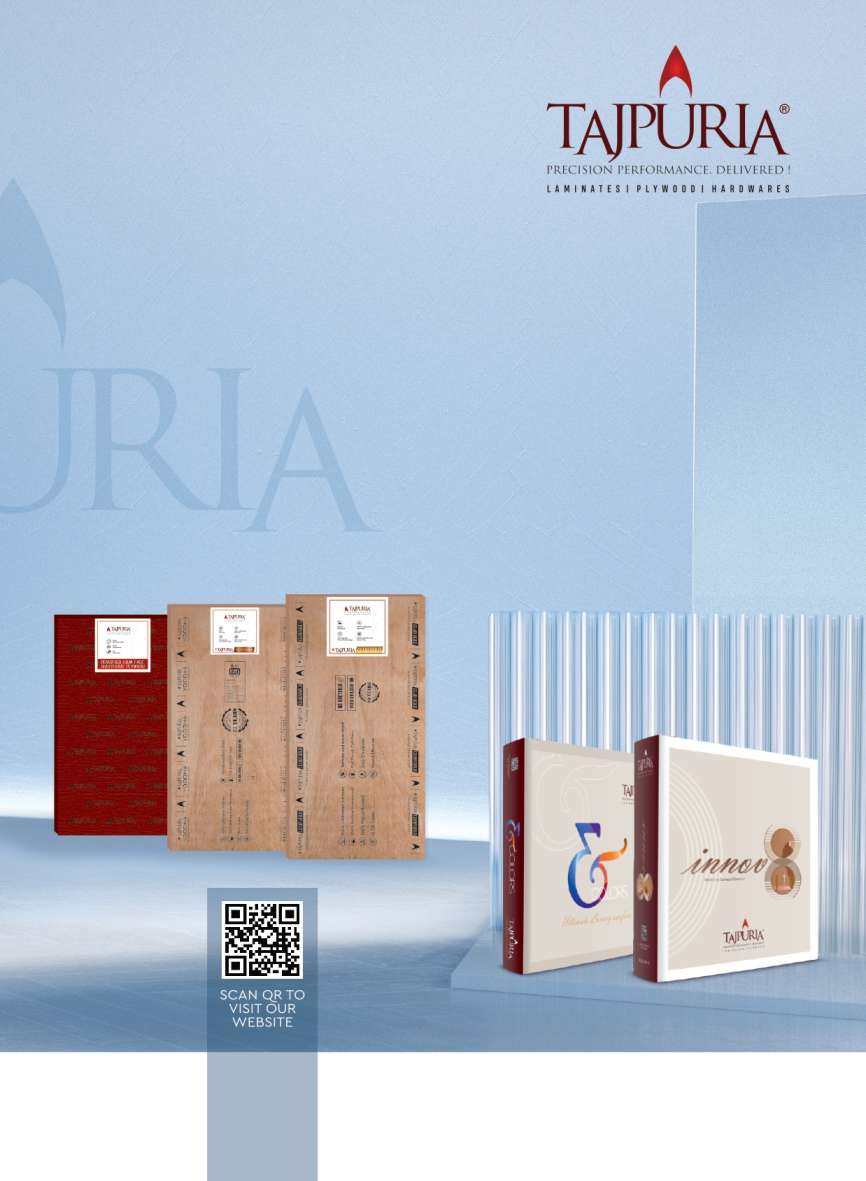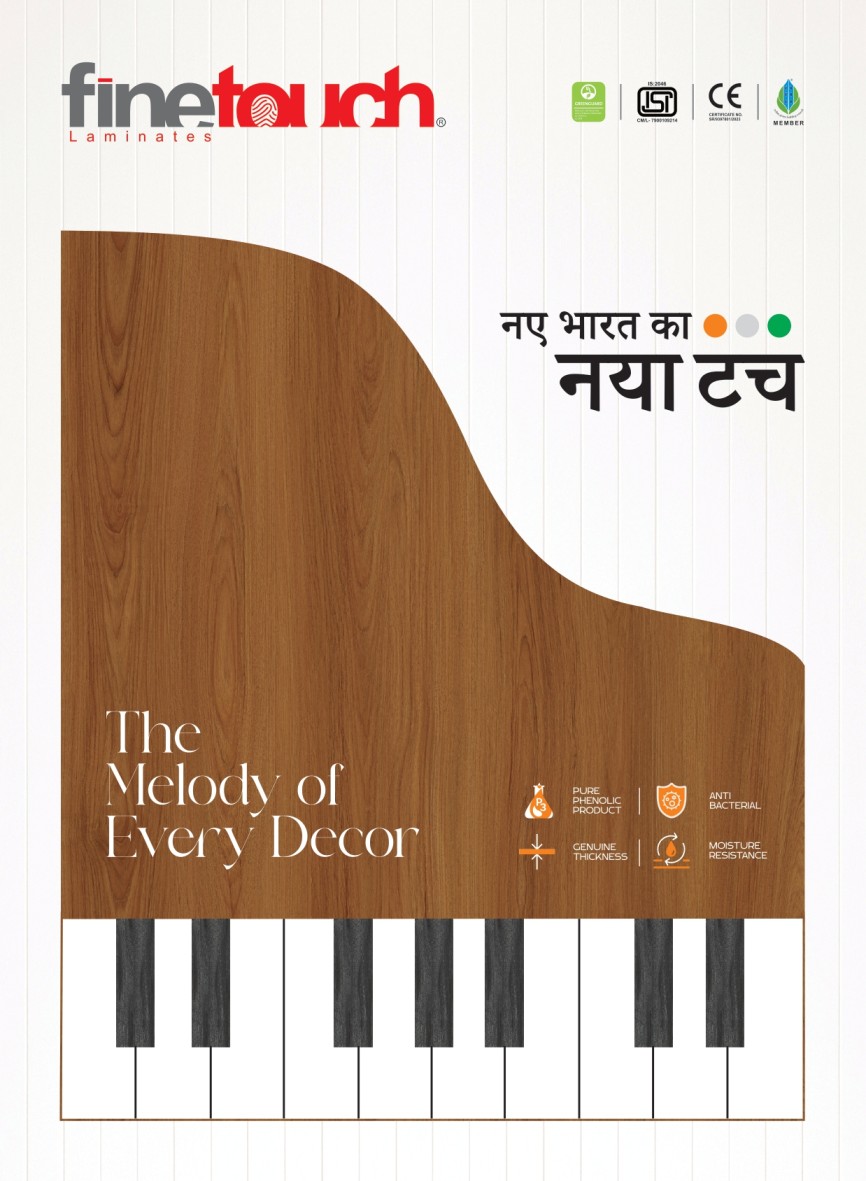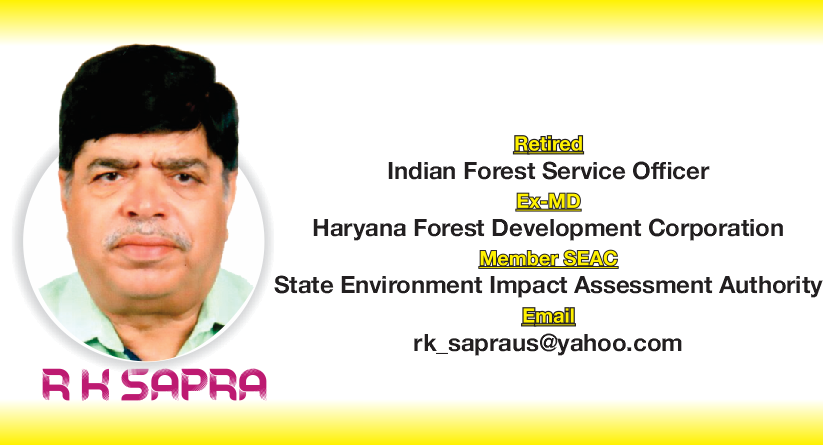
Haryana-A Potential Hub for Export of Wooden Panel Products
- मई 27, 2022
- 0
Introduction
Indian Plywood Industry, whose market size is approximately Rs. 25,000 crore, is highly fragmented with ~80% of the market share controlled by the unorganised sector while the residual 20% is with the organised segment. As per the estimates of the Indian Plywood Industries Research and Training Institute, Bengaluru, plywood and panel industry consists of around 3,300 units which provide direct employment to more than 10 lakh people and about 10 lakh people are indirectly dependent on this sector mainly in the rural areas. India is majorly a plywood and wooden panel products importing country whose import was about Rs. 4175 crore during 2019-20.
Licensing of Wood- based Industries
After reorganization of Punjab state in 1966, the Haryana Forest Department (HFD) implemented innovative schemes for expansion of ‘Tree Cover’ on panchayats and farmlands.The farming of poplar and clonal eucalyptus were promoted during 1980s and 1990s respectively, which provided a booster dose to agro-forestry. As per the technical report “The Trees Outside Forests (TOF) in India (2020)”, of Forest Survey of India, Dehradun, the area under TOFs in Haryana was 6.3% of the geographical area of the state. The agro-forestry has not only diversified the agricultural crops but also led to growth of wood-based industries (WBI) in Haryana. The Hon’ble Supreme Court ordered closure of WBIs in north-eastern statesin 1996 to save their natural forests. This crisis forced the Plywood/Veneer (PV) industry to search for alternative locations. Yamunanagar cityin Haryana emerged as a favourite location due to sustained availability of raw material. Subsequently, the apex court enforced the regulations for WBIs across the country in 2002. As per the “Proceedings of Central Empowered Committee (CEC) of Hon’ble Supreme Court (2007)”, the CEC regularized the licensing of WBIs based on 22 lakh cum as availability of wood in Haryana. Due to increased availability of wood, another 100 plywood/veneer units have come up in this city in 2017.
Present Status
Presently, Yamunanagar has the biggest market of farm wood in the country as about 35-40 lakh tonnes of wood worth about R1,500-1,800 crore are being traded annually, mainly from adjoining states. Presently in this district, there are 570 PV units and 368 subsidiary units which manufacture door and window shutters, and other shuttering products. These units are equipped with laboratories which conduct research and design the wood for specific purposes like truck bodies, railway coaches and other fire-resistant materials. Over the years, this city has become a hub of PV industry producing more than 45 per cent plywood of the country and hence called the “plywood capital of India”. This hub has not only halted the wide-spread import of Chinese plywood in the country but has also been able to export the wood products to other countries. Presently, there is a lot of dependence on imported timber in India, which is becoming costly due to shortage of timber and enforcement of certification regime in the exporting countries, hence promotion of composite wooden panels may be the right strategy to reduce the demand of solid wood in the long run. This cluster of PV units has a big potential in becoming the export hub of wooden panel products for which its upgradation needs to be facilitated.
The biggest constraint in up gradation of PV units is that the new licenses are issued only after assessing the increased availability of wood in the state, in which crucial time is lost. This issue also adversely affects the expansion of existing PV units. Secondly, this industry is mainly using cheaper machinery which affects the quality of wood products and their cost effectiveness in the long run. Hence, the standardized machinery may be used to improve their quality and economics of scale of production. Thirdly, this industry is not manufacturing panel products as per BIS Standards which are based on traditional timber. Presently, the panel products are being manufactured from juvenile wood which calls for modification in the quality standards. Fourthly, northern region is producing sufficient non-certified farm wood, hence the wood products manufactured from this wood, can’t be exported. Fifthly, this cluster of PV units is having a disadvantage of being located at longer distances from ports, hence the logistics of panel products is costly as compared to states in which the ports are located. Sixthly, the farmers suffer financial losses due to poor quality of plants and in adequate extension services which are not supported by research and development.
Actions Required
Government of India has already launched ‘Atmanirbhar Bharat Abhiyan’ to reduce dependency on imports and encourage the export of local products. Presently, there is a big scope of developing the cluster of PV units at Yamunanagar as a hub for export of wooden panel products and, the Haryana Government must facilitate this process. The State Government has already established a Department of Foreign Cooperation, Government of Haryana which encourages exports of local products and attracts foreign investments. Hence, this department may take following initiatives in promoting this cluster:
- Constituting a State Wood Promotion Council under the Chairmanship of Chief Minister with all stakeholders to take quick decisions for promoting growth of WBIs
- Registering nurseries to ensure availability of good quality planting material
- Strengthening extension of tree crops supported by appropriate research and development
- Extending the incentives to tree crops which are available to agricultural crops
- Promoting certification of wood and wood products
- Inviting leading players of PV industry for setting up and expansion of their units
- Enforcing BIS Standards for local products and international standards for export
The State Government may recommend the following measures to the Government of India for promoting this cluster:
- Enactment of TOF legislation which would ensure easy registration of WBI solely dependent on plantations and imported wood (MoEF&CC)
- Constituting a Wood Products Development Council where Government and PV industry can discuss issues for speedy development (MOC&I)
- Modifying EXIM policy to encourage export of panel products (MOC&I)
- Increasing import duty and reducing GST on panel products (MOF)
- Regulating the import of face veneers (MOC&I)
- Declaring Yamunanagar as a dry portand providing transportation subsidy to wooden panel products (MOS&T)
- Bringing farm wood under the ambit of MSP and insurance of tree crops (MOA&FW)
- WBIs need to be treated at par with the food processing industry (MOC&I)
- Extensive training and development programmes to improve the quality of wooden panel products (MOSD)
This will be a win-win situation for India as upgradation of the PV industry will bring more area under agroforestry that will increase the income of farmers, generate employment opportunities for labourers, business opportunities for various stakeholders, increase revenue for the Government including earning of foreign exchange. The encouragement to this sector will reduce the demand of solid wood which is being imported resulting in savings of the precious foreign exchange. All these will help in diversification of agricultural crops and conservation of the environment.
हरियाणा-लकड़ी के पैनल उत्पादों के निर्यात के लिए एक संभावित केंद्र
भारतीय प्लाइवुड उद्योग जिसका बाजार आकार लगभग 25,000 करोड़ रुपये है, ~ 80 प्रतिशत असंगठित क्षेत्र द्वारा नियंत्रित बाजार हिस्सेदारी के साथ अत्यधिक खंडित है, जबकि शेष 20 प्रतिशत संगठित क्षेत्र के पास है। भारतीय प्लाईवुड उद्योग अनुसंधान और प्रशिक्षण संस्थान, बेंगलुरु के अनुमान के अनुसार, प्लाईवुड और पैनल उद्योग में लगभग 3,300 इकाइयाँ हैं जो 10 लाख से अधिक लोगों को प्रत्यक्ष रोजगार प्रदान करती हैं और लगभग 10 लाख लोग अप्रत्यक्ष रूप से (मुख्य रूप से ग्रामीण क्षेत्रों के) इस क्षेत्र पर निर्भर हैं। भारत प्रमुख रूप से एक प्लाईवुड और लकड़ी के पैनल उत्पाद आयात करने वाला देश है जिसका आयात 2019-20 के दौरान लगभग 4175 करोड़ रुपये था।
लकड़ी आधारित उद्योगों को लाइसेंस देना
1966 में पंजाब राज्य के पुनर्गठन के बाद, हरियाणा वन विभाग (एचएफडी) ने पंचायतों और खेतों पर श्वृक्षों के आवरणश् के विस्तार के लिए नवीन योजनाओं को लागू किया। पोपलर और क्लोनल यूकेलिप्टस की खेती को क्रमशः 1980 और 1990 के दशक के दौरान बढ़ावा दिया गया, जिसने कृषि वानिकी को एक बूस्टर खुराक प्रदान की। भारतीय वन सर्वेक्षण, देहरादून की तकनीकी रिपोर्ट ‘‘द ट्रीज आउटसाइड फॉरेस्ट (टीओएफ) इन इंडिया (2020)’’ के अनुसार, हरियाणा में टीओएफ के तहत क्षेत्र राज्य के भौगोलिक क्षेत्र का 6.3 प्रतिशत था। कृषि-वानिकी ने न केवल कृषि फसलों में विविधता लायी है बल्कि हरियाणा में लकड़ी आधारित उद्योगों (WBI) के विकास को भी बढ़ावा दिया है।
माननीय सर्वाेच्च न्यायालय ने 1996 में उत्तर-पूर्वी राज्यों में अपने प्राकृतिक वनों को बचाने के लिए WBI को बंद करने का आदेश दिया। इस संकट ने प्लाइवुड/विनीयर (पीवी) उद्योग को वैकल्पिक स्थानों की तलाश करने के लिए मजबूर किया। कच्चे माल की निरंतर उपलब्धता के कारण हरियाणा में यमुनानगर शहर एक पसंदीदा स्थान के रूप में उभरा। इसके बाद, शीर्ष अदालत ने 2002 में देश भर में डब्ल्यूबीआई के लिए नियमों को लागू किया। ‘‘माननीय सर्वाेच्च न्यायालय (2007) की केंद्रीय अधिकार प्राप्त समिति (सीईसी) की कार्यवाही’’ के अनुसार, सीईसी ने हरियाणा में लकड़ी की उपलब्धता के आधार पर 22 लाख cum के रूप में WBI के लाइसेंस को नियमित किया। लकड़ी की उपलब्धता में वृद्धि के कारण, 2017 में इस शहर में 100 अन्य प्लाईवुड / विनीयर इकाइयां आ गई हैं।
वर्तमान स्थिति
वर्तमान में, यमुनानगर में देश में कृषि लकड़ी का सबसे बड़ा बाजार है क्योंकि लगभग 1,500-1,800 करोड़ रुपये की लगभग 35-40 लाख टन लकड़ी का व्यापार मुख्य रूप से आसपास के राज्यों से किया जाता है। वर्तमान में इस जिले में, 570 पीवी इकाइयां और 368 सहायक इकाइयां हैं जो दरवाजे और खिड़की के शटर और अन्य शटरिंग उत्पादों का निर्माण करती हैं। ये इकाइयाँ प्रयोगशालाओं से सुसज्जित हैं जो ट्रक बॉडी, रेलवे कोच और अन्य आग प्रतिरोधी सामग्री जैसे विशिष्ट उद्देश्यों के लिए लकड़ी का अनुसंधान और डिजाइन करती हैं। इन वर्षों में, यह शहर देश के 45 प्रतिशत से अधिक प्लाईवुड का उत्पादन करने वाले पीवी उद्योग का केंद्र बन गया है और इसलिए इसे ‘‘भारत की प्लाईवुड राजधानी’’ कहा जाता है। इस हब ने न केवल देश में चीनी प्लाईवुड के व्यापक प्रसार को रोक दिया है, बल्कि लकड़ी के उत्पादों को अन्य देशों में निर्यात करने में भी सक्षम है। वर्तमान में, भारत में आयातित लकड़ी पर बहुत अधिक निर्भरता है, जो कि लकड़ी की कमी और निर्यातक देशों में प्रमाणन व्यवस्था के लागू होने के कारण महंगा होता जा रहा है, इसलिए ठोस लकड़ी की मांग को कम करने के लिए मिश्रित लकड़ी के पैनलों को बढ़ावा देना लम्बी दौड़ में। सही रणनीति हो सकती है। पीवी इकाइयों के इस समूह में लकड़ी के पैनल उत्पादों का निर्यात केंद्र बनने की एक बड़ी संभावना है, जिसके लिए इसके उन्नयन की सुविधा की आवश्यकता है।
पीवी यूनिटों के उन्नयन में सबसे बड़ी बाधा यह है कि राज्य में लकड़ी की बढ़ती उपलब्धता का आकलन करने के बाद ही नए लाइसेंस जारी किए जाते हैं, जिसमें महत्वपूर्ण समय नष्ट हो जाता है। यह मुद्दा मौजूदा पीवी इकाइयों के विस्तार पर भी प्रतिकूल प्रभाव डालता है। दूसरे, यह उद्योग मुख्य रूप से सस्ती मशीनरी का उपयोग कर रहा है जो लंबे समय में लकड़ी के उत्पादों की गुणवत्ता और उनकी लागत प्रभावशीलता को प्रभावित करता है। इसलिए, मानकीकृत मशीनरी का उपयोग उनकी गुणवत्ता और उत्पादन के पैमाने के अर्थशास्त्र में सुधार के लिए किया जा सकता है। तीसरा, यह उद्योग बीआईएस मानकों के अनुसार पैनल उत्पादों का निर्माण नहीं कर रहा है जो पारंपरिक लकड़ी पर आधारित हैं। वर्तमान में, पैनल उत्पादों का निर्माण किशोर लकड़ी से किया जा रहा है जो गुणवत्ता मानकों में संशोधन की मांग करता है। चौथा, उत्तरी क्षेत्र पर्याप्त गैर-प्रमाणित कृषि लकड़ी का उत्पादन कर रहा है, इसलिए इस लकड़ी से निर्मित लकड़ी के उत्पादों का निर्यात नहीं किया जा सकता है। पांचवां, पीवी इकाइयों के इस समूह को बंदरगाहों से लंबी दूरी पर स्थित होने का नुकसान हो रहा है, इसलिए पैनल की लोजीस्टीक जिन राज्यों में बंदरगाह स्थित हैं, उनकी तुलना में उत्पाद महंगा है। छठा, पौधों की खराब गुणवत्ता और अपर्याप्त विस्तार सेवाओं जो अनुसंधान और विकास द्वारा समर्थित नहीं हैं के कारण किसानों को वित्तीय नुकसान उठाना पड़ता है।
आवश्यक कार्रवाइयां
भारत सरकार ने आयात पर निर्भरता कम करने और स्थानीय उत्पादों के निर्यात को प्रोत्साहित करने के लिए पहले ही ‘आत्मनिर्भर भारत अभियान’ शुरू किया है। वर्तमान में, यमुनानगर में पीवी इकाइयों के क्लस्टर को लकड़ी के पैनल उत्पादों के निर्यात के लिए एक हब के रूप में विकसित करने की एक बड़ी गुंजाइश है और, हरियाणा सरकार को इस प्रक्रिया को आसान बनाना चाहिए। राज्य सरकार ने पहले ही विदेशी सहयोग विभाग, हरियाणा सरकार की स्थापना की है जो स्थानीय उत्पादों के निर्यात को प्रोत्साहित करती है और विदेशी निवेश को आकर्षित करती है। इसलिए, यह विभाग इस क्लस्टर को बढ़ावा देने के लिए निम्नलिखित पहल कर सकता हैः
- WBI के विकास को बढ़ावा देने के लिए त्वरित निर्णय लेने के लिए सभी हितधारकों के साथ मुख्यमंत्री की अध्यक्षता में एक राज्य लकड़ी संवर्धन परिषद का गठन करना
- अच्छी गुणवत्ता वाली रोपण सामग्री की उपलब्धता सुनिश्चित करने के लिए नर्सरी का पंजीकरण करना
- उपयुक्त अनुसंधान और विकास द्वारा समर्थित वृक्ष फसलों के विस्तार को सुदृढ़ बनाना
- कृषि फसलों के लिए उपलब्ध प्रोत्साहन वृक्ष फसलों को भी देना
- लकड़ी और लकड़ी के उत्पादों के प्रमाणीकरण को बढ़ावा देना
- पीवी उद्योग के प्रमुख खिलाड़ियों को अपनी इकाइयों की स्थापना और विस्तार के लिए आमंत्रित करना
- स्थानीय उत्पादों के लिए बीआईएस मानकों और निर्यात के लिए अंतरराष्ट्रीय मानकों को लागू करना
राज्य सरकार इस क्लस्टर को बढ़ावा देने के लिए भारत सरकार को निम्नलिखित उपायों की सिफारिश कर सकती हैः
- टीओएफ कानून का अधिनियमन जो पूरी तरह से वृक्षारोपण और आयातित लकड़ी (MoEF & CC) पर निर्भर डब्ल्यूबीआई का आसान पंजीकरण सुनिश्चित करेगा।
- एक लकड़ी उत्पाद विकास परिषद का गठन करना जहां सरकार और पीवी उद्योग त्वरित विकास (MOC&I) के मुद्दों पर चर्चा कर सकें।
- पैनल उत्पादों (MOC&I) के निर्यात को प्रोत्साहित करने के लिए एक्जिम नीति में संशोधन
- आयात शुल्क बढ़ाना और पैनल उत्पादों पर जीएसटी कम करना (MoF)
- फेस विनियर (MOC&I) के आयात को विनियमित करना
- यमुनानगर को शुष्क बंदरगाह घोषित करना और लकड़ी के पैनल उत्पादों (MOS&T) को परिवहन सब्सिडी प्रदान करना
- खेत की लकड़ी को एमएसपी के दायरे में लाना और वृक्ष फसलों का बीमा (MO&FW)
- WBI को खाद्य प्रसंस्करण उद्योग (MOSD) के समान व्यवहार करने की आवश्यकता है
- लकड़ी के पैनल उत्पादों (MOSD) की गुणवत्ता में सुधार के लिए व्यापक प्रशिक्षण और विकास कार्यक्रम
यह भारत के लिए एक जीत की स्थिति होगी क्योंकि पीवी उद्योग के उन्नयन से कृषि वानिकी के तहत अधिक क्षेत्र आ जाएगा जो किसानों की आय में वृद्धि करेगा, मजदूरों के लिए रोजगार के अवसर पैदा करेगा, विभिन्न हितधारकों के लिए व्यापार के अवसर, विदेशी मुद्रा की कमाई सहित सरकार के लिए राजस्व में वृद्धि करेगा। इस क्षेत्र को प्रोत्साहन देने से आयात की जा रही ठोस लकड़ी की मांग में कमी आएगी जिससे कीमती विदेशी मुद्रा की बचत होगी। ये सभी कृषि फसलों के विविधीकरण और पर्यावरण के संरक्षण में मदद करेंगे।


